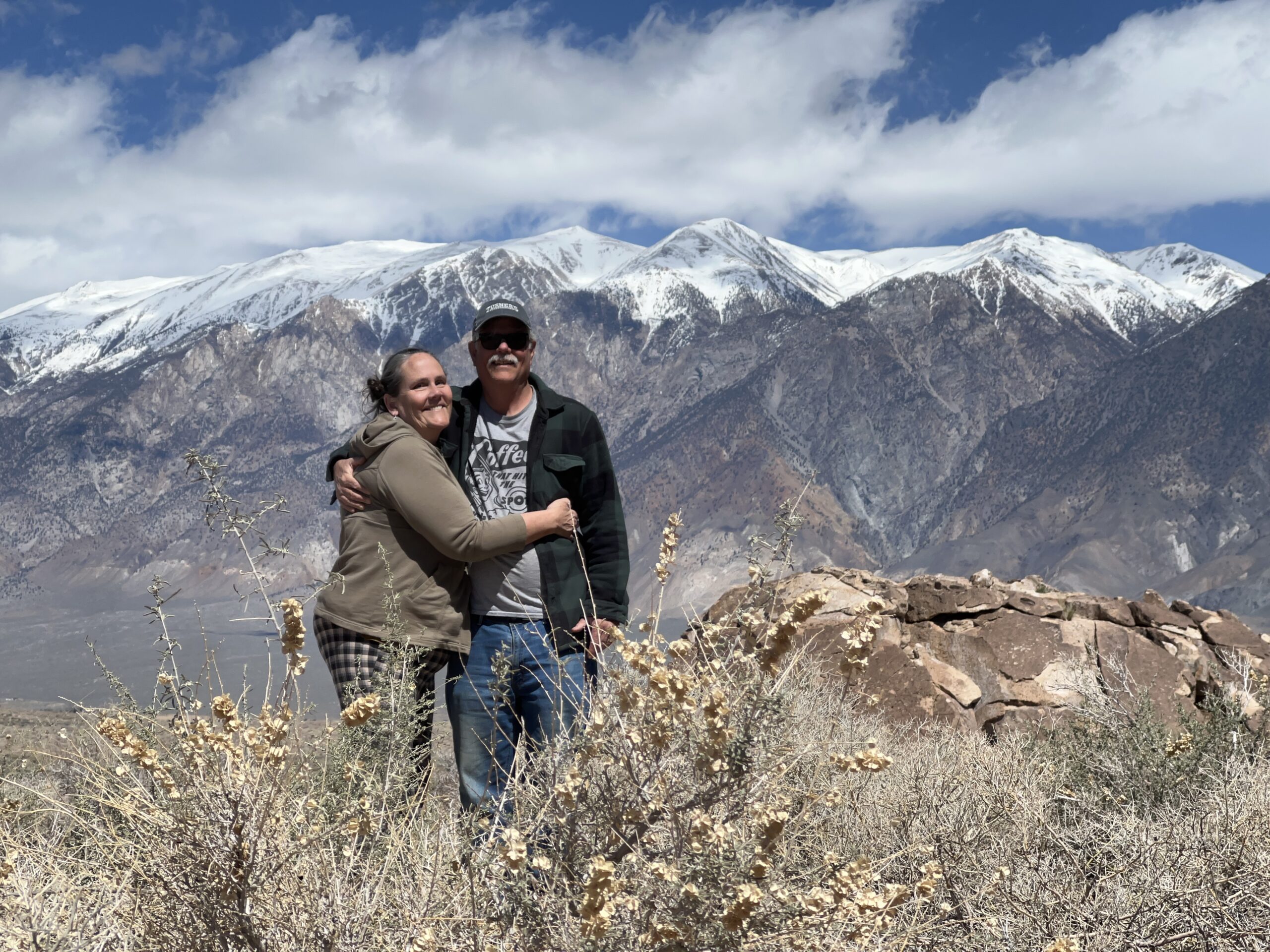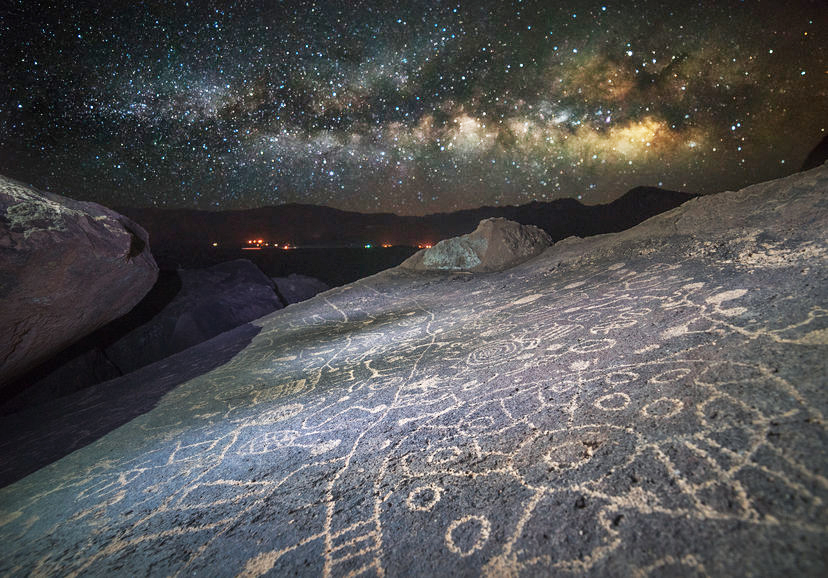 The Photographers, Sally and Dave Mehler
The Photographers, Sally and Dave Mehler
My wife Sally and I had an unexpectedly delightful experience over Spring Break. Our intention was to enjoy some hot springs in a remote area of Eastern California. While there we ended up on a search for petroglyphs we heard were in the valley. When we found them we were awed by the beauty and mystery of these ancient images.
These petroglyphs are found on a side road in the Volcanic Tablelands off Highway 6 of Eastern California’s Owen’s Valley between Benton Hot Springs to the north and Bishop to the south with the Sierra Nevadas rising up to the southwest and White Mountains to the east. Petroglyphs are inscribed into the rock as opposed to pictographs, which are painted. Tools used to carve were handheld harder rocks than the rock surface of the petroglyph being inscribed (into Bishop Tuff, igneous (rhyolite) rock, with a darker colored surface layer or patina). Little is actually known with any certainty about how old these petroglyphs are, or much about the indigenous people who made them or why. Guesses about age range between 1,000 and 10,000 years old. It is speculated that the reasons were religious and that these artists were shamans depicting dream visions, spiritual quests, or rites of initiation and symbolically documenting their journeys pictorially. Many of the petroglyphs are aimed up at the sky rather than on vertical surfaces, which suggests to some that the people documenting a vision or journey may have experienced levitation or out of body experiences, or they were aiming their stories and images at spiritual beings inhabiting the heavens. Others simply suggest there is no spiritual basis for these drawings but they are merely primitive forms of graffiti and simply communicating some sort of information. This seems less likely to me. It’s clear the petroglyphs are communicating information, but because they are so often pointing up would suggest communication was not only horizontal for tribe and posterity, but also vertical to include a nonhuman audience? Theories are speculated, but specific meanings remain a mystery. The Bishop Paiute tribal peoples are descendents of the “Nu-Mu” people, the original people of the Owen’s Valley: https://www.bishoppaiutetribe.com/about-us/
In this area there were three primary locations we photographed, marked and all within a few miles of each other: Fish Slough Petroglyph Site, Chidago Canyon Petroglyph Site and Red Canyon Petroglyph Site. We were told that petroglyphs can be found all over the area, but these three sites were where the most activity seems to have been located. Fish Slough seemed to us sparser, older, Chidago Canyon was densely concentrated and active in a very small area of rock outcropping, and finally Red Canyon was also dense in some areas but there was also a lot of activity scattered and spaced out over a larger area around mainly two smaller rock outcroppings facing one another amidst a broader area of outcroppings and rocks of sparser activity.
I know from this picture below there is at least one large panel/rockface we missed (photo credit: Sarah Rea? I recommend following up with her article linked below the photograph):

Unfortunately, there were plenty of evidences of defacement, where it was obvious petroglyphs had been removed, scratched out or shot with bullets, or simply places where people were adding to them by inscribing initials and dates, their lewd images, or adding images that were freshly scratched, some of which were suspect because they were more literally representational (I’m thinking of the handprint and sun image)? In some cases, it was hard to know, because mountain goat representations were most likely ancient. Perhaps the more recent images that were newer and more representational were still indigenous peoples but only hundreds as opposed to thousands of years old? Not having a guide, or doing excessive research, we were left to guess. I have noted some defacement or possible defacement in the titles of some images I’ve included in this issue. These sites are on public land and remote, but not hard to access if you’re aware of where they are and happen to already be in the area, but they are not monitored closely, or roped off. In Bishop there is a visitor’s center and pamphlets issued by the Bureau of Land Management available to let the public know how to find the sites. There is a hip high fence at Chidago Canyon and Red Canyon marking off the general area and signs are posted with a phone number to report defacement, theft or destructive activity. Defacement had occurred (and might still be occurring) but it could have been worse. The fact that these sites which are historical treasures have been left so vulnerable and open was simultaneously sad and thrilling: sad that others would have so little respect and open contempt or hostility, thrilling to be able to walk at leisure, explore, wonder and photograph. It’s my privilege to share these mysterious images and artworks with Triggerfish readers.
While photographing these, neither my wife nor I had any intention of sharing with a broader public—we were fascinated and photographing them for ourselves, out of pure wonder. To be there and wander and discover petroglyphs in this strange and ancient area of dense powerful spiritual juju was truly remarkable and unforgettable—I hope our simple cell phone photographs convey something of the thrill we experienced.
